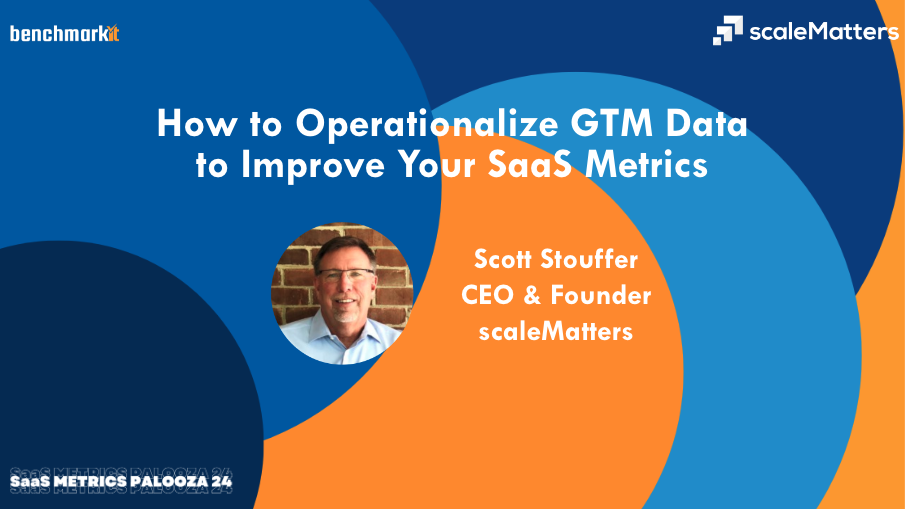4 Go-to-Market Metrics for Analyzing Sales Cycle Performance
Chief Revenue Officers are constantly looking for ways to maximize their sales performance and revenue growth. Sales cycle metrics are a key factor...
2 min read
 Scott Stouffer
October 9, 2024
Scott Stouffer
October 9, 2024

scaleMatters CEO & Founder Scott Stouffer presented at Benchmarkit's SaaS Metrics Palooza 2024. Here's the video replay along with 6 key takeaways.
SaaS metrics, like Customer Acquisition Cost (CAC), Lifetime Value (LTV), and Net Revenue Retention (NRR), answer the question, “What is the overall health and performance of the business?” These metrics give senior leaders a snapshot of their business, but they are mainly reactive. The question is: how do you use this data to improve performance?
While SaaS metrics tell you what’s happening, GTM operational analytics dive deeper to explain why it’s happening. Understanding the root causes behind performance metrics is essential for senior leadership to take informed, effective actions that lead to real improvements.
For example, knowing that your CAC is high is one thing. But understanding why certain channels cost more than others to acquire customers is the insight that will help you shift resources and reduce costs.
Operational analytics go beyond analyzing past performance—they help predict future outcomes. By leveraging high-quality data, you can create models that forecast the impact of different decisions, giving your leadership team confidence in their actions. Scenario modeling is key to creating predictability and achieving efficient growth.
Most companies have plenty of reports and dashboards, but they struggle with data that’s truly actionable. Passive reporting provides information, but it doesn’t easily translate into decisions. The problem often lies in poorly configured technology, siloed data, and a lack of data hygiene, which undermines the value of any analysis.
At scaleMatters, we use a framework called Data Drives Action that transforms GTM data into a decision-making tool. Here’s a brief outline:
This methodology has produced significant results for companies. For example, we worked with a $40M SaaS company struggling with declining win rates. After improving their data and analytics, they discovered the issue was marketing over-indexing on poor-quality SMB leads. By refocusing on their ideal customer profile (ICP), they doubled their win rate within two quarters.
Your GTM data holds the potential to drive significant growth if used effectively. By moving beyond basic SaaS metrics and focusing on operational analytics, you can uncover actionable insights that lead to better decisions—and ultimately, better results.
.png)
Chief Revenue Officers are constantly looking for ways to maximize their sales performance and revenue growth. Sales cycle metrics are a key factor...

Over the last decade, we’ve observed a number of major sales and marketing pitfalls that hinder B2B startups from reaching their growth potential and...

Optimizing your Go-to-Market motion is a journey of continuous experimentation and iteration. No company begins with a perfect blueprint or a...